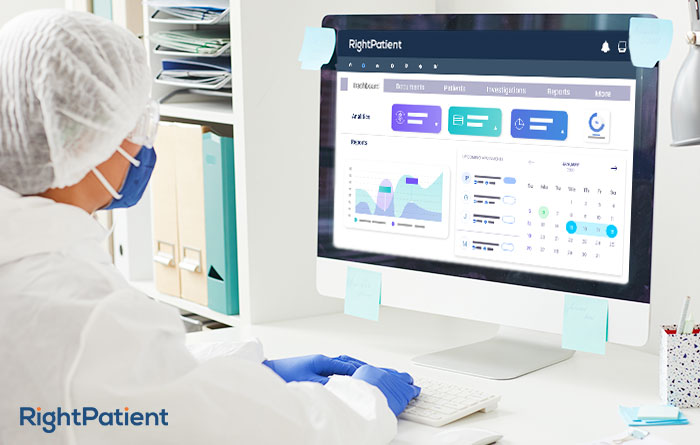4 Strategies to Optimize Revenue Cycle in Healthcare and Mitigate Losses

The US healthcare system has been going through a rough patch for a number of years now. When one problem is solved, other critical issues arise. However, with all these preexisting issues, it is now facing its biggest challenge in decades: COVID-19. With patients postponing regular visits and elective procedures, COVID-19 has created a severe financial strain and plunged hospitals and health systems into unprecedented losses. While hospitals are having to cope with these losses by closing down emergency departments, laying off employees, and so on, they can significantly reduce costs by focusing on their revenue cycles. Let’s explore why revenue cycle in healthcare is crucial, some strategies to optimize it, and how positive patient identification can help significantly.

Why is revenue cycle in healthcare important?
Revenue cycle management is one of the most crucial aspects of any given healthcare provider. In a nutshell, it is the series of events that starts when a patient schedules an appointment and ends when the provider receives payment and is reimbursed. Since it’s related to patient service revenue, it has a direct effect on any hospital’s bottom line.
If a hospital’s revenue cycle is optimized, then it will face higher margins, and if not, it will face significant losses. Complications such as billing and coding errors, patient misidentification at the front-end, and miscommunication lead to denied claims and delayed payments. In the end, patient volume won’t matter if a hospital takes a long time to capture the revenue or faces denied claims. Thus, optimized revenue cycle in healthcare facilities is extremely important if hospitals want to continue to operate in the foreseeable future.
4 Strategies to optimize revenue cycle management
Improve front-end and back-end collaboration
The front-end consists of activities where the hospital’s staff members interact with the patient directly: patient information collection, appointment scheduling, eligibility, verifying insurance coverage, upfront patient collections, and registration of new patients are just a few examples.
The back-end, on the other hand, consists of medical billing, claims management, denials management, as well as the collection of final “patient financial responsibility”.

Usually, when it comes to revenue cycle management, most healthcare providers have their front-end and back-end tasks separated. However, collaboration between the two can significantly improve revenue cycle management. Effective and seamless communication is the key, and if that can be facilitated between the front-end and back-end teams, then it will result in faster, more accurate, and improved collections.
Improve front-end activities
According to a recent webinar, half of denied claims incurred by hospitals can be traced back to front-end activities, with the top contributors being registration and eligibility issues. These ultimately cause issues at the back-end of the revenue cycle in healthcare facilities, and the caregivers are forced to allocate significant resources such as FTEs (full-time equivalents) to fix billing and coding errors. If the front-end issues are not addressed, then this will lead to an endless cycle of lower productivity and an unoptimized revenue cycle.
If the front-end processes can be improved by preventing common errors such as patient misidentification or missing patient information, then issues like claim denials, underpayments, and lower productivity of the FTEs can be vastly reduced. Automating the front-end workflow is just one step towards improvement – but more on that later.
Adopt revenue cycle automation
Revenue cycle automation is becoming more popular within the healthcare space, and for good reason. It leads to a significant reduction in the pressure that is put on healthcare professionals, reduces avoidable errors, and streamlines the entire process. However, organizations have to be cautious in their search for an effective automation tool.
Identify patients accurately
The most prominent issues that cause revenue cycle inefficiencies are patient identification errors, duplicate medical records, and medical record mix-ups at the front-end. If the accurate medical record isn’t identified, then the subsequent processes will be riddled with errors, leading to denied claims. Hospitals lose a huge amount of money – around $4.9 million – due to denied claims, many of which can be traced back to patient identification errors. Thus, revenue cycle in healthcare can be optimized if patient misidentification, duplicates, and mix-ups can be eliminated. This is exactly what RightPatient does.
RightPatient is a touchless patient identification platform that is used by several healthcare providers. It uses the patients’ photos to verify their identities, eliminating misidentification, avoiding duplicates, and preventing mix-ups at the front-end.
New patients need to take a photo during registration, locking their medical records with it. Enrolled patients only need to look at the camera – the platform identifies the patients accurately by matching the photos and provides the appropriate medical records within seconds.
By eliminating misidentification, mix-ups, and duplicates at the front-end, RightPatient ensures that the accurate medical record is used across the care continuum, eliminating denied claims, boosting bottom lines, and enhancing patient safety in the process.





























